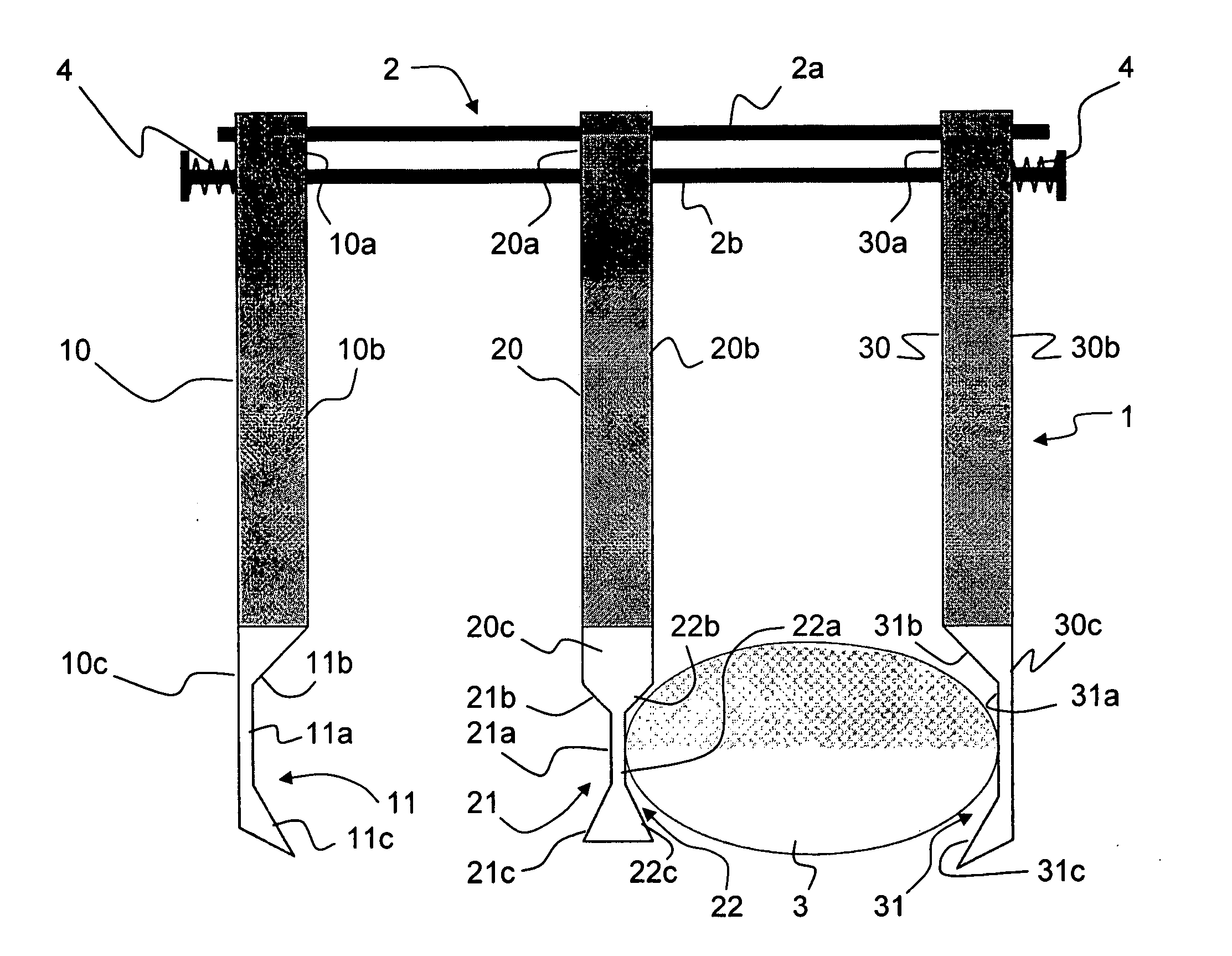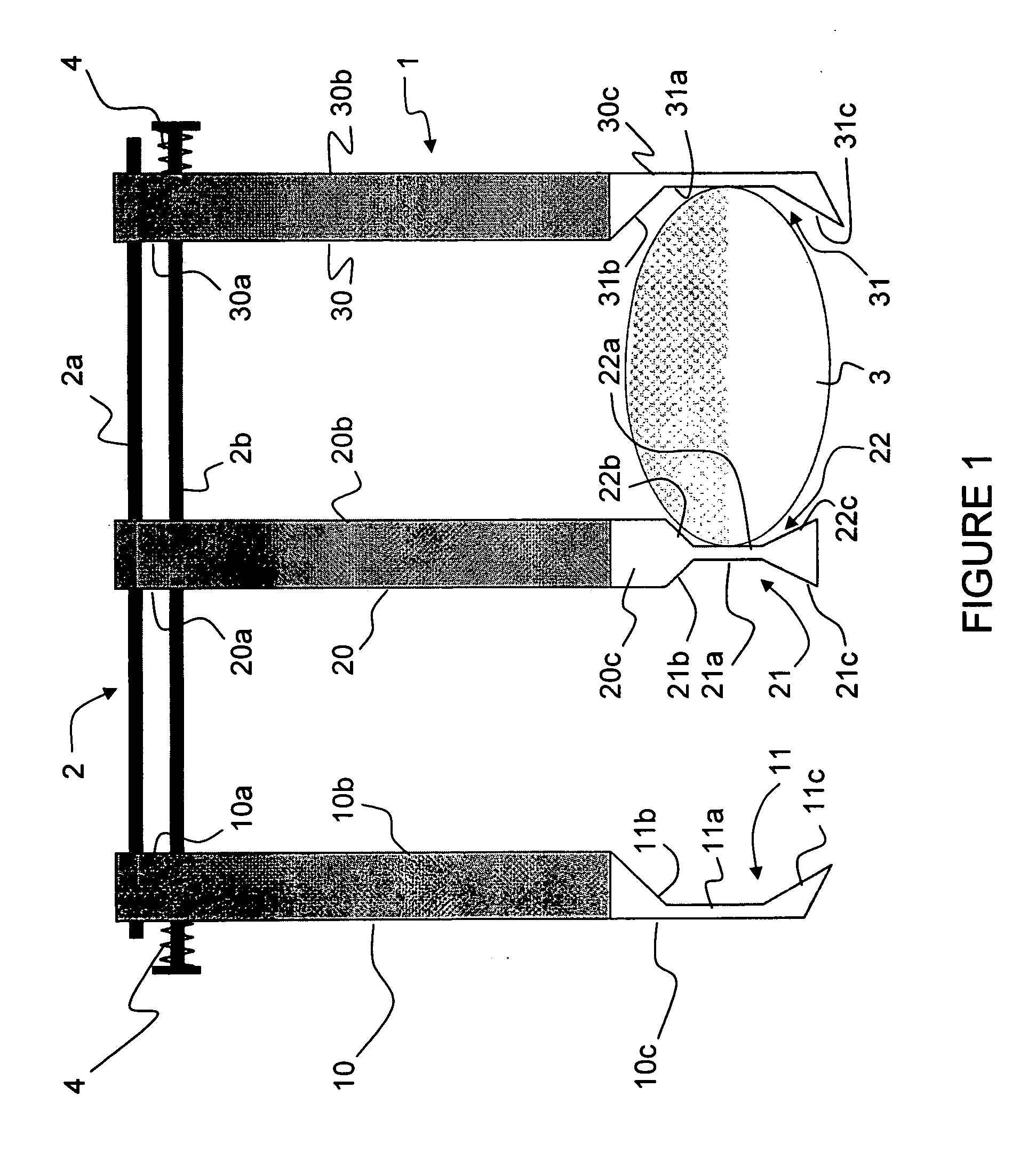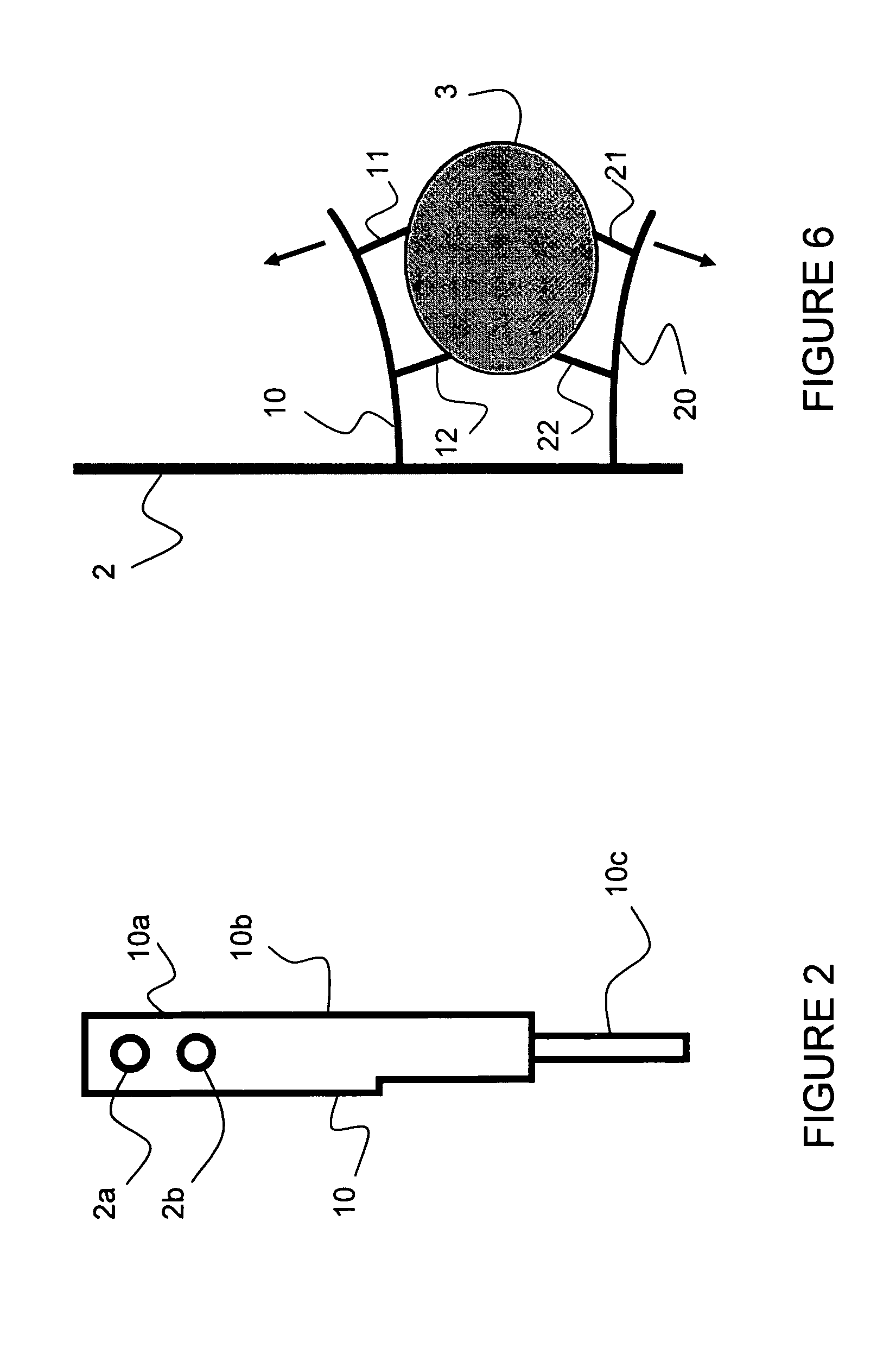Optical lens holder
a technology for optical lenses and lenses, applied in the field of optical lens holders, can solve the problems of troublesome manual handling, burns or defects due to heat, and the area of overheating might occur, and achieve the effect of absorbing the heat of the lens faster and discharging the heat faster through air exchang
- Summary
- Abstract
- Description
- Claims
- Application Information
AI Technical Summary
Benefits of technology
Problems solved by technology
Method used
Image
Examples
example 1
[0059] Polycarbonate lenses having circular edge (diameter 65 mm) were submitted to a corona discharge using a lens holder as shown in FIG. 1 having arms made of DELRIN® according to the invention, and for comparison made of TEFLON®.
[0060] Properties of the different materials are indicated in Table I below:
TABLE 1PolycarbonatePropertiesTeflon ®optical gradeDelrin ®Dielectric constant at2.12.93.71 MHzDielectric strength24 kV / mm30 kV / mm19.7 kV / mmDissipation Factor0.0003-0.00070.010.005Specific Heat kJ / kg · K1.41.21.5
[0061] In each case, the lenses were passed in front of the corona discharge at a speed of 3 mm / s, and then moved down 26 mm and passed again in front of the corona discharge at the same speed.
[0062] The corona apparatus is a Multidyne unit from 3 DT. The corona heads are located at 17 mm from the holder.
[0063] The holder used is as described on FIGS. 1 and 2.
[0064] The thickness of the parts 10c, 20c and 30c is 4 mm.
[0065] Burn marks are observed at the contact po...
example 2
[0066] Polycarbonate lens whose edge has a rectangular shape (after being edged by an edging machine) is placed in a lens holder according to the invention as shown in FIGS. 1 and 2 and is submitted to a corona discharge treatment.
[0067] The lens holder has arms made of DELRIN® with a 4 mm thickness of the lens accommodating portion, and an aluminum foil covering the lens accommodating portion of each arm.
[0068] The lens is passed in front of the corona heads at a speed of 17 mm / s, then is lowered down to 26 mm. This treatment is repeated 4 times. A delay of 5 s is observed between each passages (except when the lens is lowered down).
[0069] No defects are observed.
PUM
| Property | Measurement | Unit |
|---|---|---|
| dielectric constant | aaaaa | aaaaa |
| specific heat | aaaaa | aaaaa |
| thickness | aaaaa | aaaaa |
Abstract
Description
Claims
Application Information
 Login to View More
Login to View More - R&D
- Intellectual Property
- Life Sciences
- Materials
- Tech Scout
- Unparalleled Data Quality
- Higher Quality Content
- 60% Fewer Hallucinations
Browse by: Latest US Patents, China's latest patents, Technical Efficacy Thesaurus, Application Domain, Technology Topic, Popular Technical Reports.
© 2025 PatSnap. All rights reserved.Legal|Privacy policy|Modern Slavery Act Transparency Statement|Sitemap|About US| Contact US: help@patsnap.com



